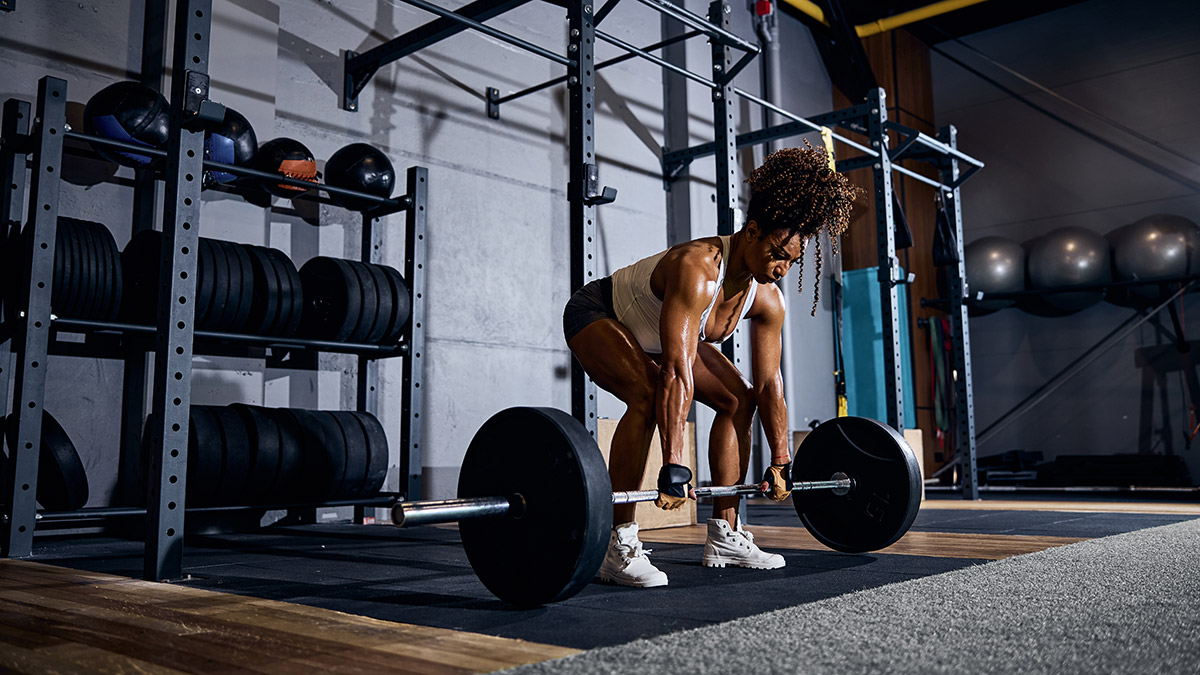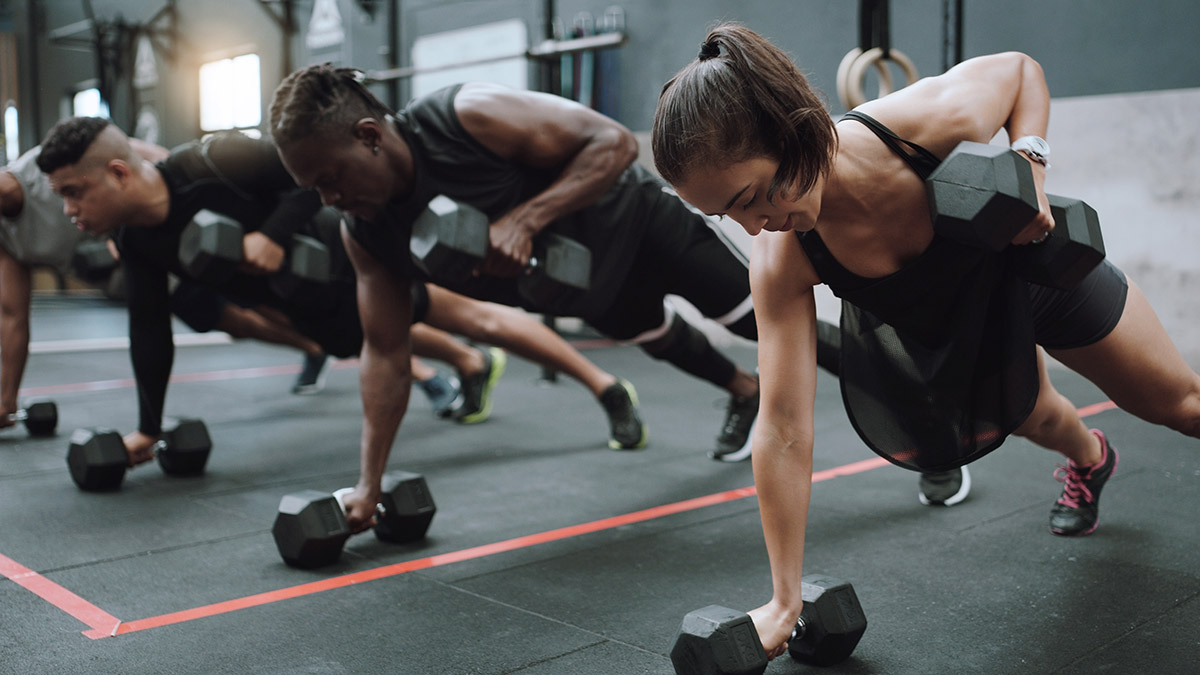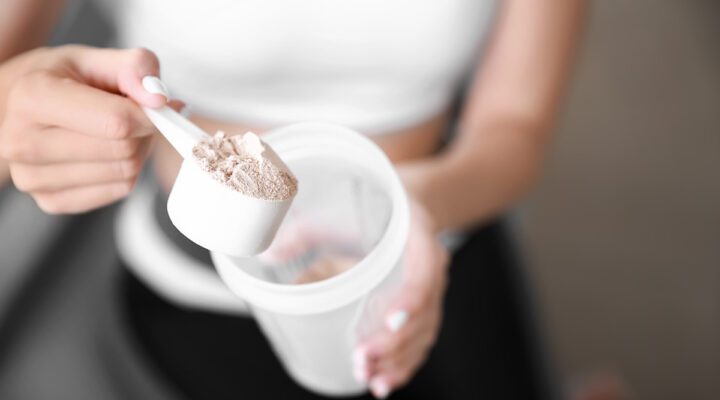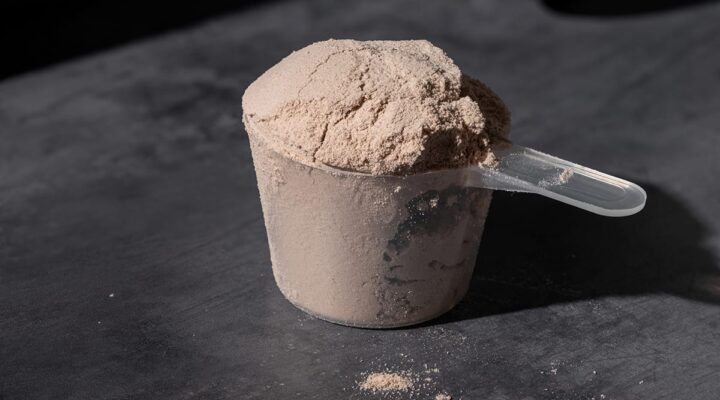What Are BCAAs and Should You Be Taking Them?

Like pre-workouts and plyometrics, BCAAs are one of those buzzwords that you’ve probably heard mentioned countless times in the gym locker room. But do you know what it actually means?
Thanks to the meteoric rise of strength training, these supplements are having a major moment on TikTok right now – with social media creators enthused about how simple it is to add them to your morning routine.
If you’re lifting weights on the regular, you might be wondering if these gain-boosting pills and powders are really worth your time – especially if getting bigger is one of your workout goals.
To help clear up the confusion, we asked Form’s Head of Nutrition Dr. Adam Collins to run down everything you need to know about BCAAs, including what they are, how they work, and whether they’re just another social media fad. Keep scrolling for our insights.
What are BCAAs?
BCAAs, standing for branched-chain amino acids, play a key part in the physical changes you see to your body when you regularly work out. Bigger biceps, stronger shoulders, thicker calves – they all wouldn’t be possible without the presence of BCAAs in the body.
These molecules, which occur naturally in protein, help to build important muscle. Amongst the 20 amino acids the body needs, there are three main types of BCAA to know: leucine, valine, and isoleucine.
Unlike other nonessential amino acids, BCAAs are considered ‘essential’ because your body can’t naturally manufacture them. Instead, you need to obtain BCAAs from eating a healthy, balanced diet on the daily.

Why are gym-goers suddenly interested in BCAAs?
BCAAs have recently taken off as a gains boosting hack with amateur athletes and bodybuilders, mainly because of their potential to boost muscle growth.
While amino acids all have unique responsibilities in the body, Dr. Adam explains that BCAAs are specifically thought to help support muscle metabolism – a technical way of saying they repair muscles after they’ve been broken down after a heavy weights session.
“When you exercise, especially through strength and resistance training, you create micro-tears in your muscle fibers,” notes Dr. Adam. “Your body repairs and rebuilds these muscle fibers through a process called protein synthesis, making them stronger and larger to adapt to the stress placed on them.”
He explains that protein synthesis requires two things: a supply of energy through exercise and amino acids – particularly these three branched-chain amino acids. ”Without an adequate supply of amino acids from protein synthesis, your muscles wouldn’t have the necessary materials to repair and grow effectively after a workout,” he notes.
While it’s possible to get all the BCAAs you need from a balanced diet, some gym-goers have started taking an extra supplement as a pre-workout insurance policy, to make sure they’re getting the most gains from each curl, push and rep. The general idea is that because they play such an integral role in muscle function, supplementing BCAAs with even more will yield greater results.
So does it work? Well, there are some encouraging studies to back up this theory. One 2018 research paper showed that BCAA supplements may be effective at increasing muscle mass, especially if they contain a high proportion of leucine.
However, there’s currently not a great wealth of evidence to suggest that getting your BCAAs from a supplement is any more beneficial than getting them from your diet, so it’s good to take the anecdotal claims on TikTok with a pinch of salt.

Are there recovery benefits too?
Potentially, yes. One study found that gym-goers who were given BCAA supplements rated their muscle soreness levels as much as 33% lower than those given a placebo.
Not only could BCAAs help to reduce the wince-worthy torture of DOMS, but they could also help to boost energy and hold-off fatigue during the workout itself.
“Going back 30 years, BCAAs were originally thought of as an ergogenic aid that was supposedly beneficial for preventing fatigue,” explains Dr. Adam. This is because the body can use BCAAs as an alternative energy source when glycogen stores become depleted during exercise.
How are BCAAs taken?
As with most essential vitamins and minerals, nutritionists say that a healthy diet is the best way to consume BCAAs.
Deficiencies of amino acids are relatively rare, as they’re naturally found in many protein-rich foods, like meat, poultry, fish, eggs, and dairy products. Vegans can also obtain them through eating lots of beans, lentils and peas.
For gym-goers looking for an added boost, BCAA supplements are available in a bunch of different forms, including powders, capsules, and liquid tinctures. As essential amino acids must come from your diet, these on-the-go formulas are a convenient way to make sure you’ve got some in your system before you head into the gym. Plus, many TikTokers like the fact that there’s no time-consuming meal prep required.
Do you need to start taking a BCAA supplements?
Dr. Adam seems positive about the benefits of BCAAs, but only if muscle growth is your ultimate goal.
“The average gym-goer that’s just looking to stay fit and healthy doesn’t really need a BCAA supplement – diet alone should be enough,” he stresses. “If you’re looking for pronounced muscle hypertrophy though, a BCAA supplement may be part of your wider strategy – along with increasing dietary protein and lifting weights too.
“The logic is that by taking a BCAA supplement, you’re synthesising a supply of protein in the body, in advance of you drawing on it. So essentially when you come to the end of a sweaty exercise class, you’ve already got everything you need to repair muscles quickly.”
He concludes: “It’s a bit like a jumpstart on the process without having to rely on taking lots of protein after a workout.”
A quick disclaimer though: You can’t simply gulp down a BCAA supplement, sit back at the gym and expect miraculous muscle-boosting results.
While supplementation may give you an edge, building muscle will always require consistent, challenging workouts that stress the muscle fibers, allowing protein to effectively repair and rebuild them. In essence, the old adage holds true: No pain, no gain.


















